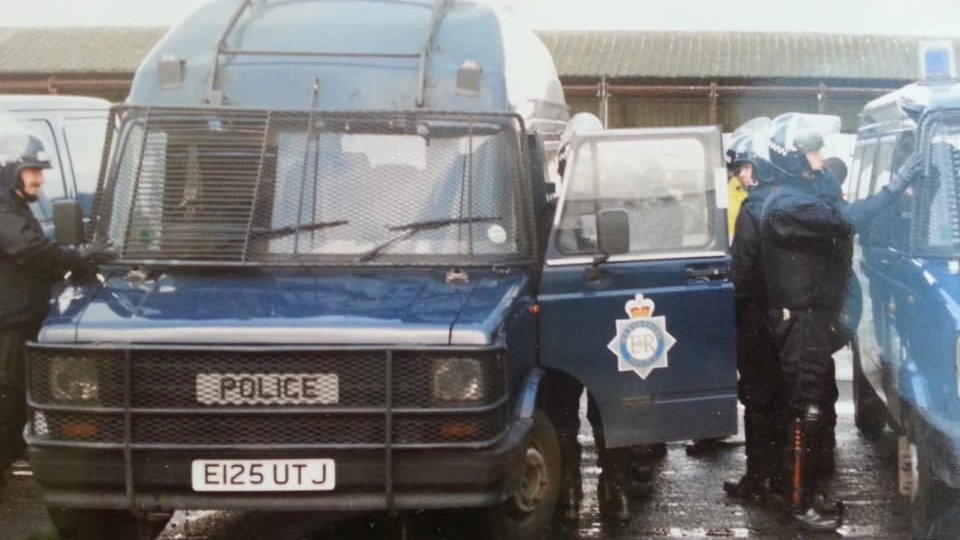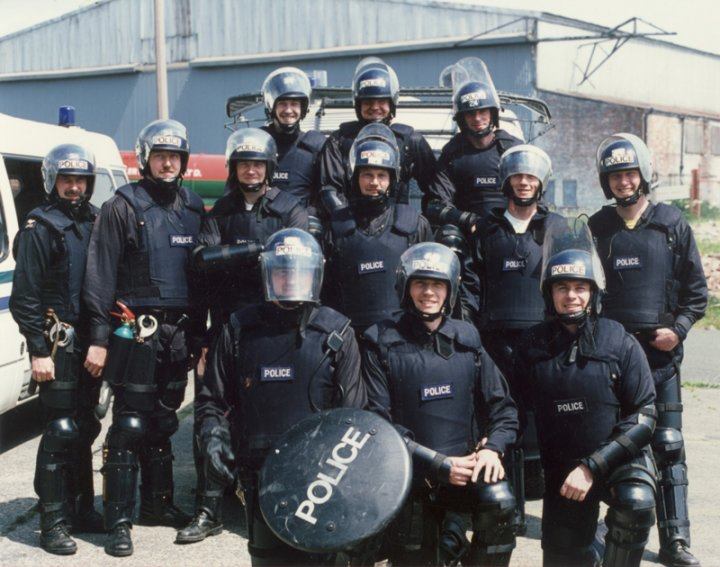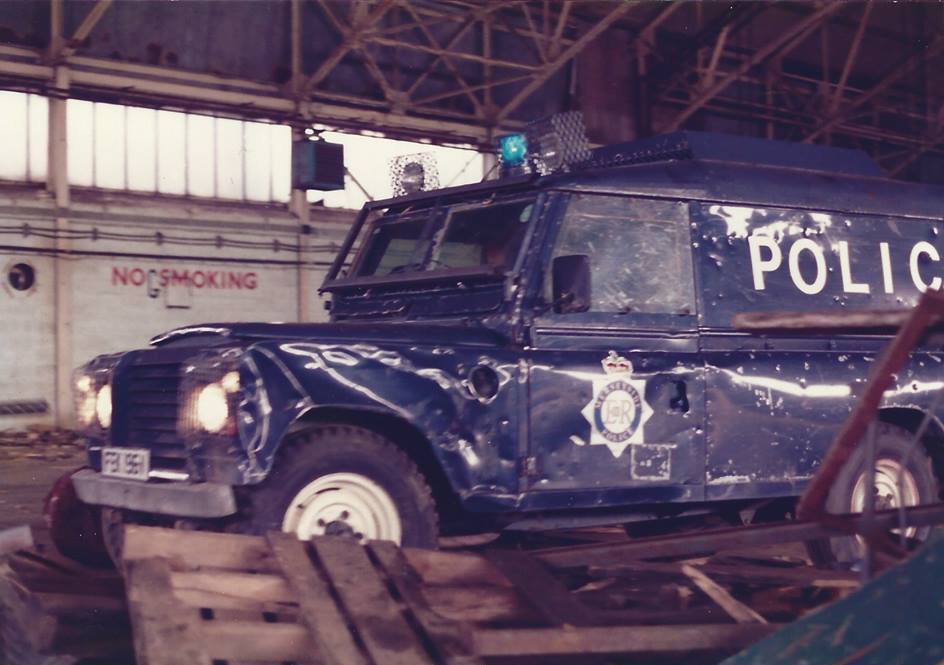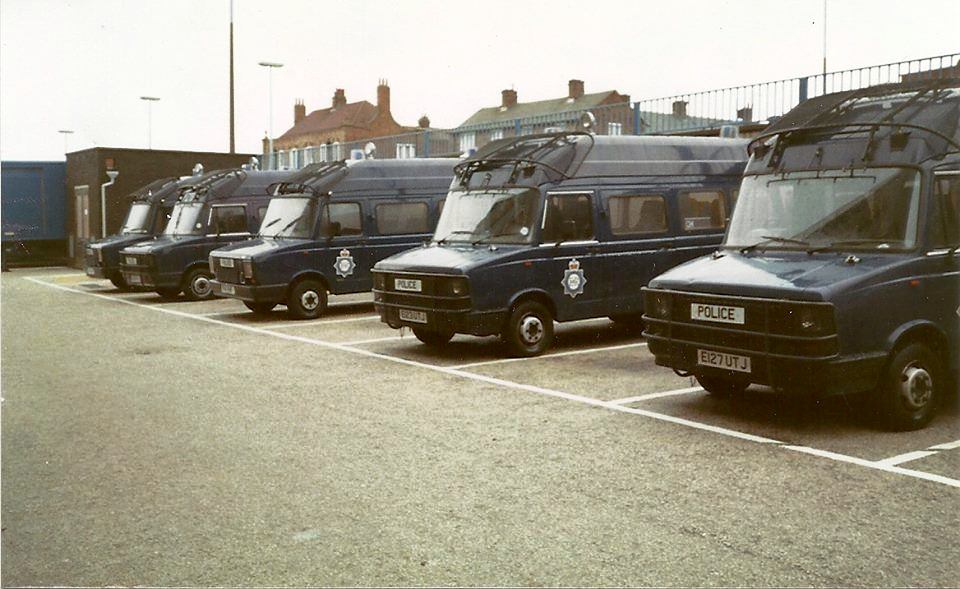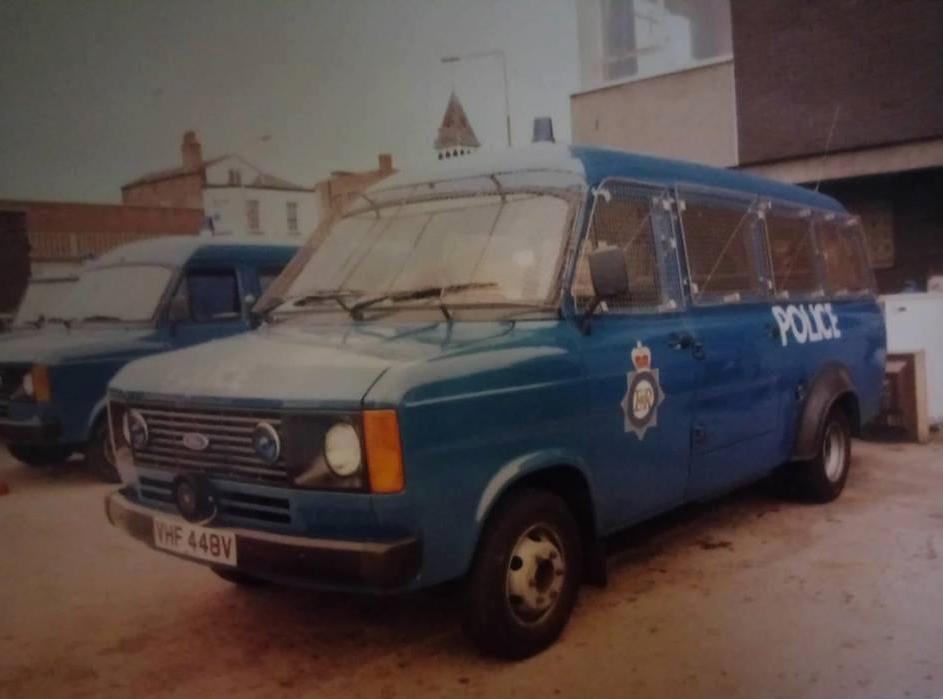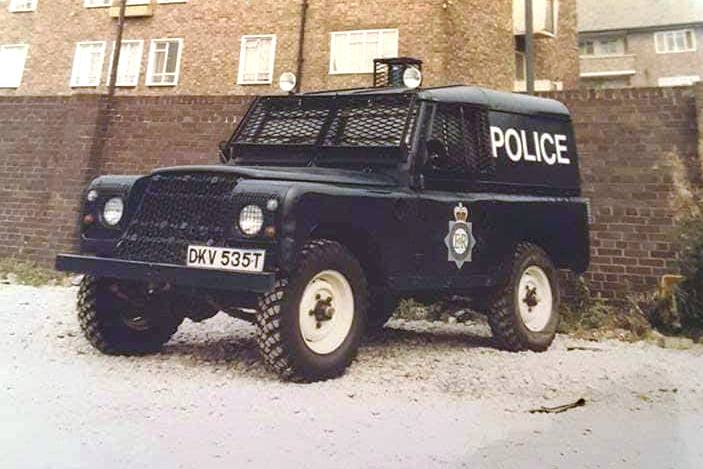Operational Support Division by Paul Addy, Retired
Bert Balmer‘s Commando Squad was reorganized in late 1967 or 1968 to become the Task Force. Later, when the Merseyside Police was formed in 1974, it became the Operational Support Division (OSD).
Tasked with conducting uniformed and plain clothes crime patrols throughout Merseyside, it came with a small fleet of marked Police carriers and a selection of unmarked cars whose call signs were prefixed X for Xray followed by either U for Uniform or P for Papa, indicating whether the crew was in uniform or plainclothes. Xray Uniform 12 would be a uniformed patrol in an unmarked car, Xray Papa 12 plainclothes in an unmarked car. Marked police carriers began with Xray Uniform followed by a number from 20 to 29.
The Division also possessed several armoured Landrovers in order to aid their secondary role as the Force’s first responders to large scale disorder and in these vehicles they provided close support during the 1981 riots and were instrumental in swiftly resolving the 1985 riot.
By 1978, the unit was providing authorised firearms officers trained to contain incidents involving armed offenders. They also provided armed escorts for category ‘A’ prisoners (deemed, by the Prison authorities, to be dangerous or at serious risk of criminal attempts to free them) and assisted the Nuclear authorities’ armed officers escorting nuclear waste within the Merseyside area. Major murder enquiries saw the OSD provide the control and the teams who conducted ‘House to House’ enquiries and teams to search all manner of places essential to the murder investigations, their expertise providing important information on many occasions.
Around 1985, the Division grew to include the Dog section and the Mounted Department, each being known by the designations OSD (Dogs) and OSD (Mounted) respectively. This left the originals to be designated as the ‘Support Group’.
Over time, the Divisions’ expertise and responsibilities grew. The Support Group became highly trained in ‘bomb search’ techniques and were used to clear and secure premises subject of visits by Royalty and others designated as VIPs.
With this responsibility came a new vehicle; XU90, the bomb vehicle, capable of being deployed to the scenes of suspected or actual bombs with all the equipment necessary to secure the area in order to preserve life.
The Force obtained a helicopter to counter the serious increase in car related crime in the county: aggravated burglaries and robberies (often committed in Cheshire, North Wales and Greater Manchester, the offenders more often than not returning to Merseyside). Officers from the Support Group, because of their superior knowledge of the entire county, provided the police observer crews whilst the aircraft itself was flown by highly skilled ex-military helicopter pilots.
The changes didn’t stop there. Soon, the Crown Court Security unit came under the OSD wing and it even provided the administration for the Regional Underwater Search Unit; such was the OSDs reputation in the Northwest.
At its height, the Support Group consisted of five groups each with four units of six Constables and a Sergeant. Each Group had at least one policewoman. Groups were commanded by an inspector. In overall control was a Chief Inspector and a Superintendent.
When the Force had formally formed its Firearms Department in the early nineties, OSD officers helped form the nucleus of the Department both as crew members of the Armed Response Vehicles (alongside Traffic officers) and as members of the Tactical Aid Unit, specialist firearms officers (SFOs) trained, amongst other things, in hostage rescue.
As the word ‘Division’ became unpopular in some Police circles so followed a mutation to being the ‘Operational Support Unit’. The Support Group name didn’t officially change though but such is the allure of three letter abbreviations (TLAs) in the police that the officers began to refer to themselves as the ‘OSG’ (the G standing for ‘Group’).
In 2005, the original unit that formed the OSD and which became the ‘Support Group’ returned to its roots when what began as the Commando Squad became the Matrix, a mix of uniformed officers and CID detectives fighting serious and organised crime.
Bert Balmer’s original idea had come a long way and was still good.
Paul Addy (Retired)
August 2020
Also see the Commando Squad page.


